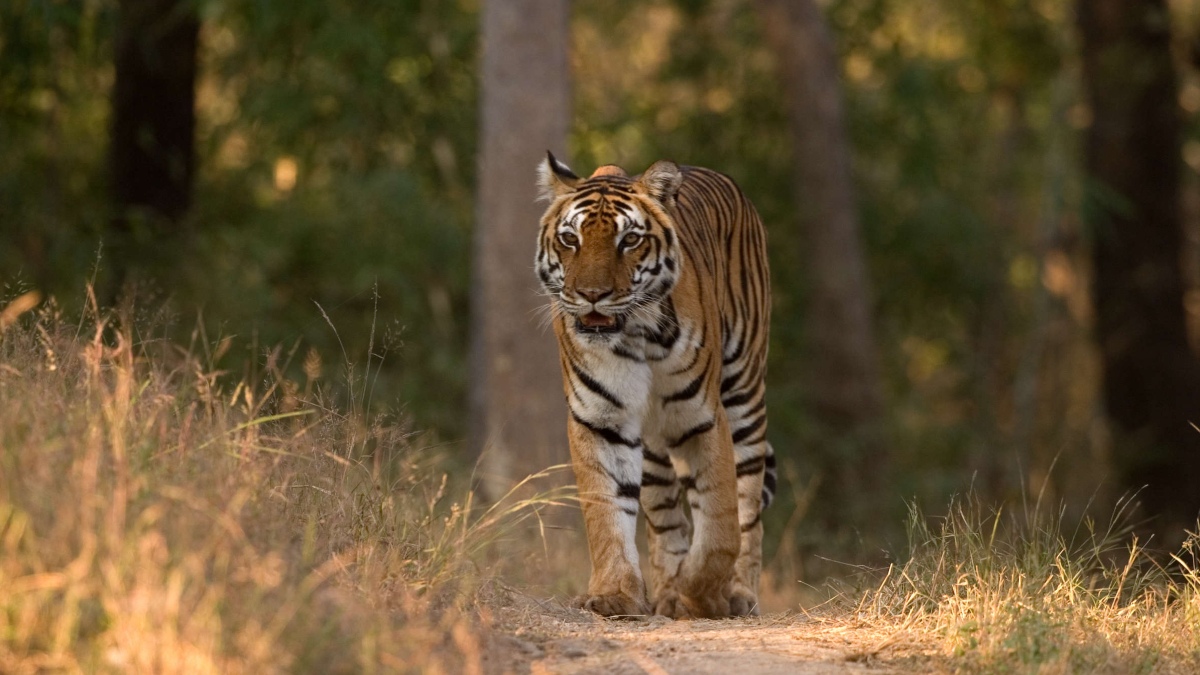


The official figures of tigers in a state indicates how much forestlands it has; and how clean its environment is. Such a green milieu also shows how benevolent Mother Nature is to that state and signals its prosperity. The forests of Madhya Pradesh are echoed with the roars of tigers. Those rolls waft a message that the big cats are flourishing with vitality in a natural habitat in the state.
Madhya Pradesh lies in the heart of India. It is also home to tigers. They live here in peace. The state is not only known to the world for its culture, tradition, and historical vestiges but also for its natural resources and tigers. In the past four years, the number of tigers has shot up by 218. If their number goes up in this way, then there will be more than 660 tigers next year, when the tigers census will take place.
According to the 2018 Tiger Census, Madhya Pradesh has 526 tigers. The state had 308 big cats in 2014, nevertheless. The forest department is enthusiastic about the fact that as the number of tigers has increased in the state, one can see big cats even in those districts where there had been no tigers.
The story does not end here. Eleven districts have seen a rise in the number of tigers. The number of big cats has gone up so much in Kanha, Bandhavgarh, and Pench Tiger reserve that one can see them stroll in normal forest areas. As far as Bhopal goes, sightings of big cats in the state capital and its nearby areas are barely uncommon. There are reports about the movements of nearly one and a half dozen tigers in forests around the state capital. Similarly, 40 tigers ramble in the dark deep woods of Balaghat.
The movements of tigers caught the sight of many foresters in Indira Sagar and Omkareshwar dams. There had barely been any big cats in these areas. Forest officials shifted chital (spotted deer) to these areas to increase the population of tigers. The tigers are fond of hunting chital. The efforts of the forest department yielded fruits. In the past four years, people have spotted big cats in the forests of Dewas. There were no tigers in these forests earlier.
Foresters also caught the glimpse of tigers in the woods of Khandwa, Panna, Chhatarpur, Damoh, Umaria, Chitrakoot, Maihar, Sarangpur, Satna, Rewa, Katni, Shahdol, Vyauhari, and Jabalpur. People living in Mahoba district on the rims of Uttar Pradesh have spotted tigers from Panna Tiger Reserve. Similarly, many people have seen the movements of tigers on the roads of Sidhi, Chhattisgarh, Pench, and on the borders of Maharashtra and Rajasthan.
THE NUMBER OF TIGERS HAS INCREASED IN PAST TWO YEARS; 60% RISE IN RESERVED AREAS
The number of tigers has gone up since 2018 from 5% to 60%. The official figures of tigers have increased by 100 in five national parks, 24 in reserved forests, and 63 in forests in the state in the past two years. Besides, there are more than 45 cubs across the state, which will become one-year old by the time the census begins next year. The forest officials say if the number of tigers continues to increase in this way, it will be 660 when the census begins next year.
Bandhavgarh has seen the highest number of tigers in the past two years, which is 40. According to an internal survey, there were 124 big cats in Bandhavgarh National Park in 2018. Now, it has shot up to 164. Similarly, Panna Tiger Reserve had 25 tigers. Their number has now grown to 42.
Kanha National Park which had 88 tigers in 2018 has now 118. Pench Tiger Reserve had 61 tigers, whose number has gone up to 64. In the same way, Satpura Tiger Reserve had 40 tigers in 2018. Now, it has 45. Two years ago, Dubri had five tigers. The number has gone up to 13 now. The internal survey is, however, conducted on the method followed across the country to estimate the number of big cats.
REASONS FOR THE RISING NUMBER OF TIGERS IN MADHYA PRADESH
The number of tigers has increased in Madhya Pradesh because it has a more conducive atmosphere in its forests, national parks, and wildlife sanctuaries to the growth of big cats than other states. The state provides in its national parks and in its wildlife sanctuaries an environment favourable to the breeding of tigers. They are also given proper food. In the reserves—especially in the national parks and in the tiger reserves—there are adequate arrangements for their protection. In the past decade, many villages have been displaced from the core areas of tigers such as Kanha, Panna, Pench, Satpura, and Bandhavgarh reserves.
Now that the villagers have been ousted and those areas have turned into grassy lands, the number of chitals, sambhar, blue bulls, and four-horned antelopes have increased. The tigers count on these animals for survival. The tiger is an integral part of forests. This animal plays a significant role in developing ecosystem and diversity.
This wild animal helps nature to maintain a balance between the food chain and trees. Therefore, the presence of tigers is necessary to maintain the ecosystem.
Dr Shailendra Srivastava is retired DGP, Madhya Pradesh & Chairman, Citizens for Change Foundation.
The number of tigers has gone up since 2018 from 5% to 60%. The official figures of tigers have increased by 100 in five national parks, 24 in reserved forests, and 63 in forests in the state in the past two years. Besides, there are more than 45 cubs across the state, which will become one-year-old by the time the census begins next year.